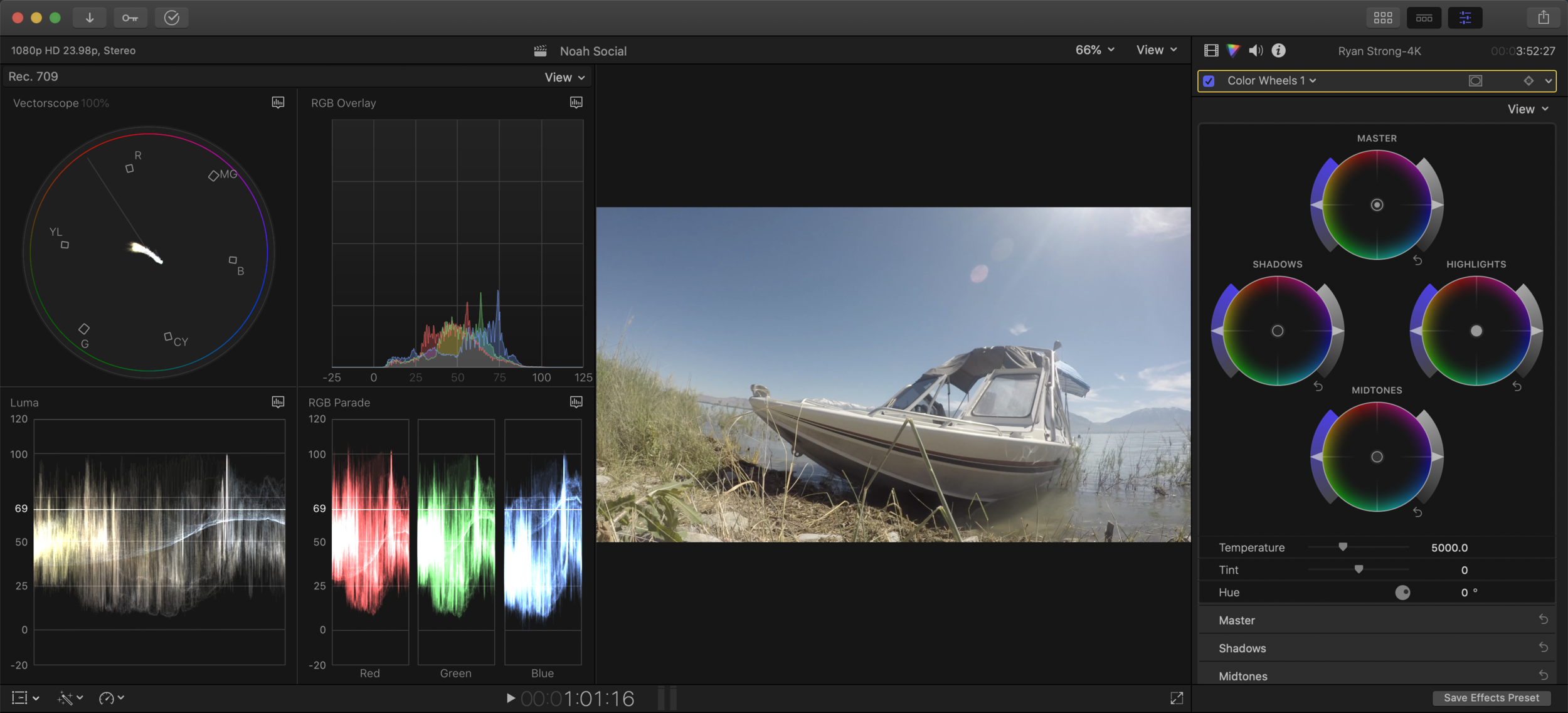Final Cut Pro vs Premiere Pro - Color Correction
COLOR CORRECTION
The first time you open a new software it can feel a bit intimidating and sometimes you don’t even know where to start. There are dozens of options to choose from but there are two that stand out from the crowd and among video editors this has been a debate since the release of the two programs. Adobe’s Premiere Pro vs Apple’s Final Cut Pro, they are probably the two most commonly used and best rated video editing software for the majority of creators. So let’s compare and deconstruct the two and see how they stack up against one another when it comes to color correction from a general user perspective.
FINAL CUT PRO
Since the start of Final Cut Pro it has always included color correction by allowing the user to use a tool called the color board. The color board is a simple linear view of your color settings which makes it easy and intuitive for a first time user. The only problem with this was if you have experience using photo editing or professional color correction applications it might feel quite foreign to you. Compared to a tradition color wheel the color board showed the same information but in a flat liner view as mentioned above. Then on Dec 14th, 2017 Apple released Final Cut Pro X (10.4) a new version with the most significant changes being targeted towards color. With this new update it greatly improved and expanded the tools and features of what Final Cut provided with color. This made it a game changer by adding color wheels, curves, hue/saturation curves, and support for LUTs.
COLOR WHEELS
The color wheel is the classic, old-school way to digital color correction. It has control pucks in the center that allows you to move an image towards red, green, and blue. You can also separately adjust the brightness, saturation, shadows, midtones, or highlights for each wheel. It is surprisingly powerful and intuitive making it a fast and easy tool to use.
COLOR CURVES
The color curves is another powerful but basic tool Final Cut and most other softwares provides. When using it you can adjust luma, red, green, and blue channels and also other colors by using the eyedropper tool. You can create multiple control points allowing you to adjust each of the primary colors to a very specific point and gives an incredible insight to monitor your color usage.
PREMIERE PRO
When it comes to color correction Premiere Pro definitely has more traction compared to not just Final Cut Pro but most other applications. They offer pro-level color correction tools with powerful features that editors can now access in their workspace where previously it was in a separate software. Their most impressive tool is the Lumetri color tool which offers a huge amount of color manipulation like HSL Qualifier which FCPX does not offer. You can adjust white balance, exposure, contrast, highlights, shadows, saturation, ects and all can be activated with keyframes. Premiere Pro also has a dedicated color correction workspace that you can customize completely to your workflow. With a basic understanding of how to color correct and grade your footage you can dramatically enhance and bring your image to life.
LUMETRIC TOOL
The Lumetri color panel gives editors a huge amount of color manipulation and options to customize and create a variety of different looks and feels to your project. It also has a few different layouts so that whatever software yor previously came from it will still feel familiar. The Lumetri tool also supports 3D LUTs.
SUMMARY
If you're in the market for a new video editing software solely for color correction Premiere Pro is definitely the way to go. There are color correction options for almost every style of editor, you get the ability to customize and create a workspace to best suit you and is overall a powerful tool. Adobe has done a great job to create an all-in-one tool. Final Cut Pro still has a little way to go but is not far behind and hopefully with a few more updates it will catch up in the near future. One can argue that it is better in some ways but there is still a lack of a few Pro features that Premiere already offers without any plugins.




